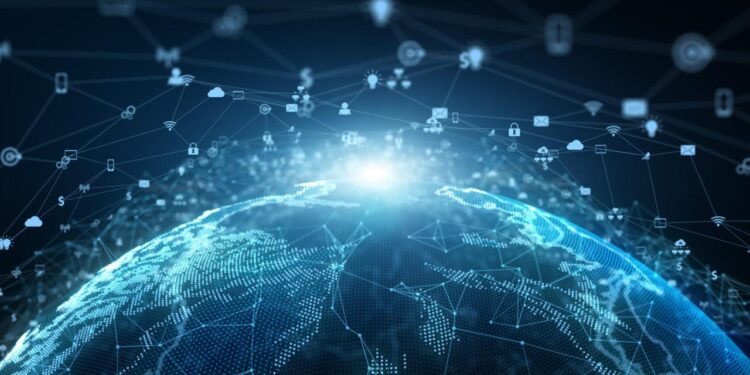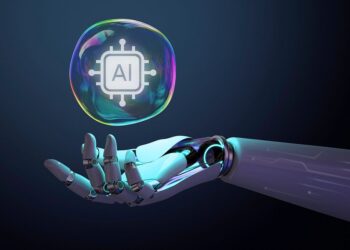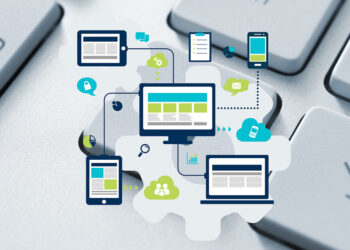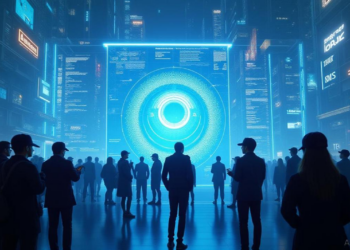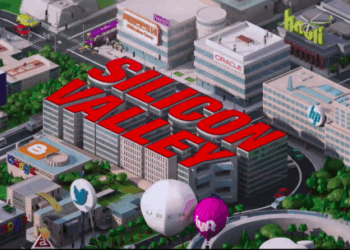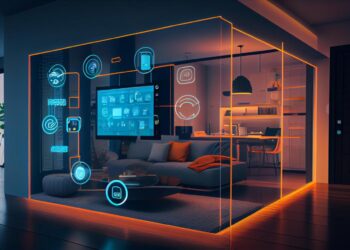The technological landscape is a dynamic, ever-shifting frontier, constantly redefining the limits of human ingenuity and capability. What once seemed like distant science fiction is rapidly transitioning into tangible reality, driven by exponential advancements across diverse disciplines. The concept of Next-Gen Tech encapsulates these groundbreaking innovations, representing a pivotal leap beyond current capabilities towards a future where intelligence, connectivity, and immersive experiences are seamlessly woven into the fabric of our daily lives. These aren’t merely incremental upgrades; they are foundational shifts poised to disrupt industries, solve complex global challenges, and fundamentally reshape human interaction with the digital and physical worlds. This comprehensive article delves into the intricate realm of Next-Gen Tech insights, dissecting the foundational pillars driving these transformations, the profound impacts they are poised to deliver, the significant challenges they must overcome, and the exhilarating possibilities they promise for sculpting our collective future.
Defining the Horizon of Next-Gen Technology
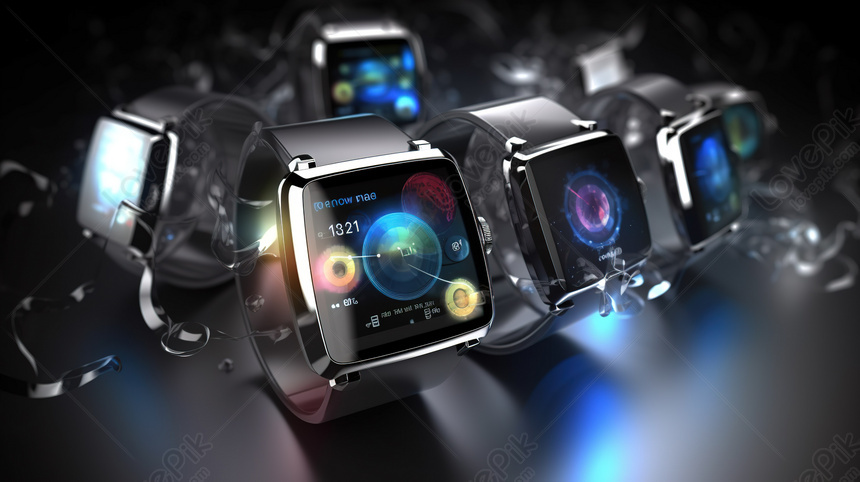
Next-Gen Tech refers to a suite of emerging and rapidly maturing technologies that are not only individually powerful but also synergistically combine to unlock capabilities previously unimaginable. It’s about a convergence that drives intelligence, autonomy, and immersive experiences to new frontiers.
A. Artificial Intelligence (AI) and Machine Learning (ML): The central nervous system for virtually all Next-Gen Tech, enabling systems to learn, reason, adapt, and make intelligent decisions at unprecedented scales.
- Generative AI: Beyond merely analyzing data, this branch (e.g., Large Language Models for text, Stable Diffusion for images) creates entirely new content – text, images, audio, video, and even code – pushing the boundaries of creativity and automation.
- Reinforcement Learning: Enabling autonomous agents (robots, self-driving vehicles) to learn optimal strategies through trial and error in complex, dynamic environments.
- Neuromorphic Computing: Hardware designed to mimic the structure and function of the human brain, promising vastly more energy-efficient and powerful AI processing for on-device intelligence.
- Federated Learning: A privacy-preserving machine learning technique where models are trained on decentralized data, with data remaining on local devices, enhancing data security and reducing the need for centralized cloud processing.
B. Quantum Technologies: Leveraging the principles of quantum mechanics to revolutionize computing, communication, and sensing.
- Quantum Computing: Uses quantum phenomena (superposition, entanglement) to solve complex problems intractable for classical computers, with applications in drug discovery, materials science, cryptography, and financial modeling.
- Quantum Cryptography/Quantum Key Distribution (QKD): Offers theoretically unhackable communication by using quantum mechanics to detect eavesdropping, crucial for securing future networks.
- Quantum Sensing: Highly sensitive sensors capable of unprecedented precision in measuring magnetic fields, gravity, and time, with applications in navigation, medical imaging, and scientific research.
C. Advanced Connectivity (6G and Satellite Networks): The invisible backbone enabling real-time, ubiquitous, and low-latency communication for billions of devices.
- 6G Technology: The successor to 5G, promising even higher bandwidth, ultra-low latency (sub-millisecond), ubiquitous coverage, and integration with AI at the network edge, enabling truly intelligent and instantaneous digital interactions.
- Satellite Internet (LEO Constellations): Low Earth Orbit (LEO) satellite constellations (e.g., Starlink, Project Kuiper) provide high-speed, low-latency internet access globally, bridging the digital divide and enabling IoT in remote areas.
- Terahertz (THz) Communication: Explores higher frequency bands for extremely high data rates, crucial for future holographic communication and highly dense sensor networks.
D. Extended Reality (XR): An umbrella term encompassing Virtual Reality (VR), Augmented Reality (AR), and Mixed Reality (MR), creating immersive and interactive digital experiences.
- Immersive VR: Transports users to fully simulated digital environments for gaming, training, virtual meetings, and remote collaboration. Next-gen VR will feature higher resolution, wider field of view, and more natural interaction.
- Contextual AR: Overlays digital information onto the real world via smart glasses or contact lenses, providing real-time data, navigation, and interactive elements.
- Mixed Reality: Seamlessly blends virtual objects with physical environments, allowing users to interact with both in real-time.
- Haptic Feedback & Olfactory Tech: Enhancing XR experiences by providing realistic sensations of touch, temperature, and even smell.
E. Biotechnology and Synthetic Biology: Engineering biological systems for new functionalities, with profound implications for health, materials, and energy.
- CRISPR and Gene Editing: Precise tools for editing DNA, enabling therapies for genetic diseases, developing disease-resistant crops, and potentially modifying organisms for specific purposes.
- Personalized Medicine: Leveraging genomics, AI, and bio-sensors to create highly individualized treatments and preventive healthcare strategies.
- Lab-Grown Organs and Tissues: Advancements in tissue engineering and 3D bioprinting for creating organs for transplantation, reducing donor shortages.
- Bio-Integrated Electronics: Merging biological systems with electronic components, leading to advanced prosthetics, brain-computer interfaces (BCI), and implantable sensors.
F. Advanced Robotics and Autonomous Systems: Moving beyond industrial automation to highly intelligent, adaptable, and collaborative machines.
- Humanoid Robotics: Robots designed to mimic human form and movement, capable of complex manipulation and social interaction, with applications in care, service, and exploration.
- Swarm Robotics: Large collectives of simple robots working together to achieve complex tasks that a single robot cannot, for environmental monitoring, construction, or disaster response.
- Autonomous Everything: Beyond self-driving cars, this includes autonomous drones for delivery and inspection, intelligent agricultural robots, and fully automated logistics systems.
- Soft Robotics: Robots made from flexible, compliant materials that are safer for human interaction and can navigate unstructured environments more effectively.
G. Decentralized Technologies (Blockchain and Web3): Reshaping trust, ownership, and digital interactions.
- Blockchain Beyond Cryptocurrency: Applications in supply chain transparency, secure digital identities, verifiable credentials, and decentralized data storage.
- Decentralized Autonomous Organizations (DAOs): Organizations run by code and governed by token holders, exploring new models of collective decision-making.
- Non-Fungible Tokens (NFTs): Representing unique digital ownership, impacting art, gaming, and digital assets.
- Decentralized Finance (DeFi): Reimagining financial services without traditional intermediaries.
The Transformative Impact of Next-Gen Tech
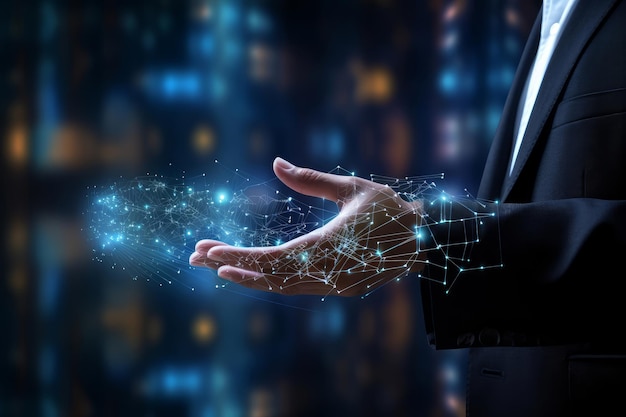
The widespread adoption and convergence of these next-gen technologies promise a profound reshaping of industries, societies, and individual lives, driving unprecedented levels of efficiency, connectivity, and human capability.
A. Revolutionizing Healthcare and Life Sciences:
- Predictive and Preventive Medicine: AI and biotech will enable highly personalized health insights from genomic data and continuous monitoring, allowing for disease prevention rather than just treatment.
- Accelerated Drug Discovery: Quantum computing and AI will drastically reduce the time and cost of discovering and developing new drugs and therapies.
- Enhanced Diagnostics: AI-powered medical imaging and bio-sensors will provide earlier, more accurate diagnoses, leading to better patient outcomes.
- Personalized Therapies: Gene editing and lab-grown tissues will enable treatments tailored to an individual’s unique biological makeup.
B. Transforming Industries and Economies:
- Hyper-Automation: AI-powered robotics and autonomous systems will automate complex tasks across manufacturing, logistics, agriculture, and services, leading to unprecedented efficiency and productivity gains.
- New Business Models: Decentralized technologies (Web3) and AI will enable entirely new forms of commerce, ownership, and value creation.
- Smart Infrastructure: AI, IoT, and advanced connectivity will create truly intelligent cities, energy grids, and transportation networks that are more efficient, resilient, and sustainable.
- Resource Optimization: AI will enable precision management of energy, water, and raw materials, reducing waste and improving sustainability across all sectors.
C. Reshaping Human Interaction and Experience:
- Immersive Digital Worlds: XR technologies will create highly realistic and interactive virtual and augmented environments for work, entertainment, education, and social connection.
- Seamless Human-AI Collaboration: AI will become an intuitive co-pilot in various aspects of life, augmenting human intelligence, creativity, and problem-solving abilities.
- Enhanced Accessibility: Advanced interfaces (BCI, sophisticated voice AI) will make technology more accessible to individuals with diverse abilities, fostering greater inclusivity.
- Personalized Digital Companions: AI-powered assistants will evolve to understand nuanced human emotions and contexts, offering more empathetic and tailored support.
D. Driving Environmental Sustainability:
- Precision Resource Management: AI and IoT will optimize energy consumption, water usage, and agricultural inputs, significantly reducing environmental footprints.
- Climate Modeling and Adaptation: Quantum computing and advanced AI will enable more accurate climate modeling and accelerate the development of solutions for climate change mitigation and adaptation.
- Circular Economy Enablement: Blockchain and AI can enhance traceability and optimize recycling and reuse processes in complex supply chains.
E. Advancing Scientific Discovery and Exploration:
- Accelerated Research: Quantum computers and AI will crunch vast datasets to make breakthroughs in fundamental science (e.g., discovering new materials, understanding complex biological processes).
- Remote Exploration: Advanced robotics and autonomous systems will enable deeper exploration of space, oceans, and hazardous environments, expanding human knowledge.
Navigating the Challenges of Next-Gen Tech Adoption
Despite the immense potential, the journey to widespread and beneficial adoption of Next-Gen Tech is fraught with complex challenges that demand careful consideration, ethical frameworks, and proactive global collaboration.
A. Ethical, Bias, and Trust Concerns:
- Algorithmic Bias: AI models, especially Generative AI, can perpetuate and amplify biases present in their training data, leading to unfair or discriminatory outcomes in critical applications like hiring, lending, or even creative output.
- Transparency and Explainability: The “black box” nature of complex AI models makes it difficult to understand their decision-making processes, hindering trust, accountability, and the ability to debug errors.
- Misinformation and Deepfakes: Generative AI can create highly realistic fake content (deepfakes) that can be used for malicious purposes, eroding trust in digital information and impacting social cohesion.
- Job Displacement: While new jobs will emerge, widespread automation driven by AI and robotics will lead to significant job displacement in certain sectors, necessitating massive reskilling and societal safety nets.
- Digital Divide: The high cost and complexity of many Next-Gen Techs could exacerbate existing inequalities, widening the gap between those who can access and benefit from these technologies and those who cannot.
B. Data Privacy and Security:
- Vast Data Footprint: Next-Gen Tech, particularly AI and IoT, relies on collecting and processing unprecedented volumes of highly sensitive personal and operational data, raising profound privacy concerns.
- Quantum Security Threats: The advent of quantum computing poses a significant threat to current encryption standards, necessitating urgent development and adoption of quantum-resistant cryptography for future security.
- Cybersecurity Vulnerabilities: The interconnectedness of Next-Gen devices and systems creates an enormous attack surface, making them prime targets for sophisticated cyberattacks that could have catastrophic physical or economic consequences.
- Decentralization Challenges: While blockchain offers security, ensuring data privacy and regulatory compliance within decentralized systems remains complex.
C. Regulatory and Governance Complexities:
- Lagging Legislation: Laws and regulations globally struggle to keep pace with the rapid advancements of Next-Gen Tech, leading to legal ambiguities regarding responsibility, intellectual property, and ethical boundaries.
- International Harmonization: Diverse national and regional regulations for AI, data, and quantum technologies create a complex compliance landscape for global innovation and deployment.
- Liability Frameworks: Establishing clear legal liability for autonomous systems or AI-driven errors is a critical and evolving challenge.
- Responsible AI Development: Governments and organizations must develop robust frameworks for responsible AI development, including principles for fairness, transparency, accountability, and human oversight.
D. High Investment and Resource Demands:
- Prohibitive Costs: Developing and deploying cutting-edge Next-Gen Techs like quantum computers, 6G networks, or advanced humanoid robots requires colossal investments in research, infrastructure, and talent.
- Energy Consumption: Training and operating large-scale AI models and quantum computers are highly energy-intensive, raising concerns about their environmental footprint if not powered by sustainable sources.
- Supply Chain Dependencies: Reliance on complex global supply chains for rare earth minerals and advanced components creates geopolitical vulnerabilities and ethical sourcing challenges.
E. Technical Hurdles and Reliability:
- Scalability: Ensuring Next-Gen Tech solutions can scale efficiently to meet global demand without compromising performance or cost.
- Interoperability: Achieving seamless communication and integration between diverse hardware and software components across different Next-Gen ecosystems remains a significant challenge.
- Robustness in Real-World Scenarios: Ensuring autonomous systems and AI perform reliably and safely in unpredictable, real-world “edge cases” is technically challenging.
- Hardware Limitations: Despite advancements, the physical limits of current hardware (e.g., battery life, heat dissipation for powerful chips) continue to pose constraints.
F. Public Acceptance and Social Impact:
- Fear and Misunderstanding: Public apprehension about AI taking jobs, autonomous systems, or the ethical implications of biotech can hinder adoption if not addressed through transparent communication and education.
- Over-reliance and Dependence: Societies might become overly reliant on these technologies, potentially losing fundamental skills or becoming vulnerable if systems fail.
- Impact on Human Connection: While offering new forms of connection, immersive digital worlds and pervasive AI could also alter the nature of human relationships.
The Future Shaped by Next-Gen Tech
The trajectory of Next-Gen Tech points towards a future that is not just technologically advanced but fundamentally re-imagined. It is a future where the lines between the physical and digital, the human and the artificial, become increasingly blurred.
A. Symbiotic Human-AI Ecosystems: AI will evolve beyond tools to become truly intuitive partners, seamlessly augmenting human cognition, creativity, and physical capabilities across all domains, from education and healthcare to work and daily life.
B. The Metaverse as a Lived Reality: Fully immersive and persistent virtual and augmented worlds, powered by advanced XR and 6G, will become commonplace for work, social interaction, entertainment, and commerce, offering experiences indistinguishable from physical reality.
C. Autonomous and Self-Organizing Systems: Cities, factories, and even personal devices will operate with a high degree of autonomy, self-optimizing, self-healing, and dynamically adapting to changing conditions, leading to unprecedented efficiency and resilience.
D. Hyper-Personalized Everything: From medicine tailored to individual genomics to education dynamically adapting to brainwave patterns, every aspect of our experience will be customized to an unprecedented degree by AI and advanced sensors.
E. Accelerated Scientific Discovery: Quantum computing and advanced AI will unlock breakthroughs in fundamental science, leading to solutions for global challenges like energy scarcity, incurable diseases, and climate change at an accelerated pace.
F. Decentralized and Trustless Digital Societies: Blockchain and Web3 technologies will underpin new models of digital ownership, governance, and verifiable information, fostering greater transparency, security, and user control in a hyper-connected world.
G. Bio-Digital Convergence: The merging of biology and digital technology will lead to advanced prosthetics, neural interfaces that enhance human cognition, and synthetic biology creating new materials and life forms, fundamentally redefining human existence.
Conclusion
The journey into the frontiers of Next-Gen Tech is a thrilling, albeit complex, expedition. It promises a world of unparalleled convenience, profound insights, and transformative experiences. Navigating the ethical pitfalls, ensuring equitable access, and establishing robust governance will be crucial. But ultimately, these intelligent advancements are poised to fundamentally redefine what it means to be human in an ever-smarter, more interconnected, and more capable future.

